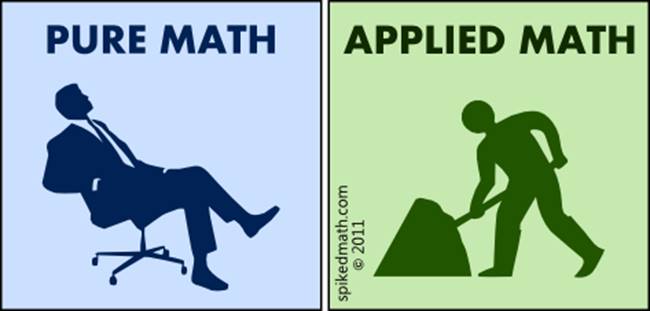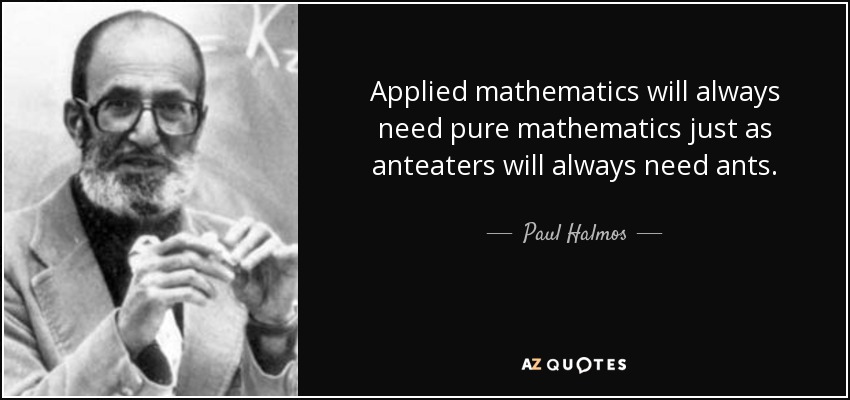In February of this year, political scientist Andrew Hacker wrote an op-ed in the New York Times titled ‘The Wrong Way to Teach Math,’ in which he argued that math teachers should trade their purely theoretical math curriculum in for one more focused on numeracy: the ability to understand and work with numbers. Math classrooms should focus less on theory, and more on real-world problems, e.g. corporate profits, the national debt, or health plan costs.
In a world where students don’t remember the Pythagorean Theorem, and where people still have trouble figuring out the cost of a carpet when given dimensions and price per square-yard, something in math education needs to change, he says. “Calculus and higher math have a place of course,” he writes, “but it’s not in most people’s everyday lives. What citizens do need is to be comfortable reading graphs and charts and adept at calculating simple figures in their heads.”

Source: www.spikedmath.com
And data shows that he is right; numeracy skills are used daily in a large number of jobs and they impact employment, health and civic participation. However, on average across developed countries, less than 30% of students know concepts like the artihmetic mean, polygon and divisor. So is moving away from pure math the future of math education?
A June 2016 report by the Organization for Economic Cooperation and Development (OECD) shines an interesting light on the discussion. Researchers studied math instruction in 64 different countries and regions scattered all over the globe and looked specifically at how students did on the Programme for International Student Assessment, or PISA.
Even though the test is mostly compiled of applied-math questions, this research found that students who had received more instruction on pure, theoretical math did better.
So what happened?
Andreas Schleicher, director of the education and skills department at the OECD, explained it thusly: “Our analysis is [that] when students have really understood the foundations, they can extrapolate. They can apply that knowledge in another context. However, if they only teach students tips and tricks, how to solve small everyday problems, they know how to solve those problems, but they’re not good at transferring that knowledge to another context.”
Hacker’s argument for revamping math education therefore seem to primarily address another prevalent topic in most math education research: motivating students. Math can be made ‘relevant’ to adolescents by applying it to creative, concrete, real-world examples. But it doesn’t necessarily give students the best foundation.

Source: www.azquotes.com
Luckily, most of the teachers, authors and publishers we work with seem to have a good understanding of this. A great deal of the content on our platform, both that of our own as well as the content of established publishers and teachers, seem to follow the same steps:
The idea driving our math education is to teach students not to just memorize rules, but to make sure they deeply understand the concept.
The challenge then is not just what to teach, but also how to teach it. The delivery of content matters just as much as the content itself. When the right type type of introduction and feedback is given to the student, both in the classroom as well as digital, it can open up the way to successfully navigating through the processes of formulating, employing and interpreting mathematics. It requires balancing how much information you give the student and how much they need to figure out on their own.
Andrew Hacker’s op-ed piece holds true in many ways; students do need a better understanding of practical math. However, the basis of applied math lies in understanding the concepts that drive it, so just switching to teaching only applied math won’t help. A good balance between theoretical and applied mathematics, preferably one where the theory flows nicely into real-world problems, is needed in math education.
However, it doesn’t end with content, i.e. what we teach. As many teachers know, what matters most is how we teach. So give agency to your students, challenge them to figure out mathematical riddles on their own, giving them personalized feedback that can help them figure out the next step as they go.
We design our own courses with this in mind. Because that way we can give students the right toolbox to figure out corporate profits, the national debt, or health plan costs, or even physics and engineering questions!
Let’s talk again soon,
Jeroen